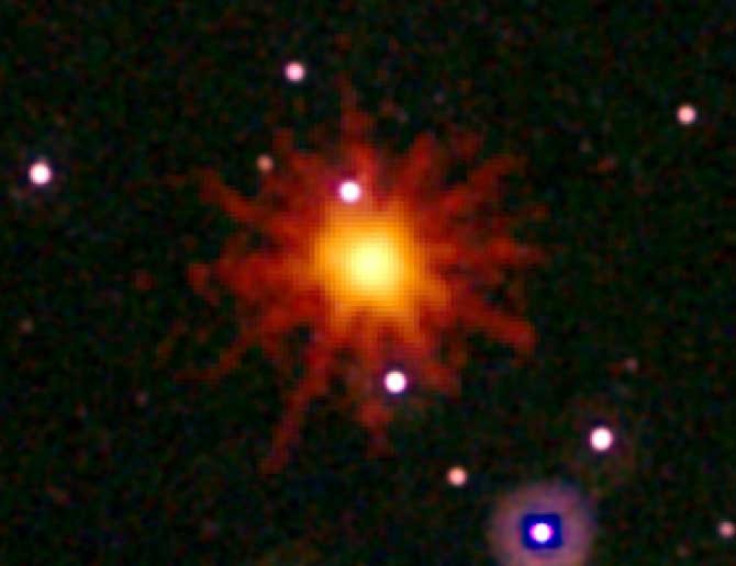Supermassive Black Holes Found Growing in Small Distant Galaxies

Finding supermassive black holes growing in small galaxies suggests that central black holes formed at an early stage in galaxy evolution, astronomers say.
Researchers say all massive galaxies do host a central supermassive black hole that may shine brightly as an active galactic nucleus. That's if the black hole is pulling in nearby gas clouds. However, in the local universe, active black holes are seldom seen in small dwarf galaxies.
Astronomers used the Hubble Space Telescope to examine the distant universe and found these massive black holes growing in smaller galaxies.
It's kind of a chicken or egg problem: Which came first, the supermassive black hole or the massive galaxy? says Jonathan Trump, a postdoctoral researcher at the University of California, Santa Cruz, in a statement. This study shows that even low-mass galaxies have supermassive black holes.
Trump is first author of the study.
The galaxies he and his coauthors studied are about 10 billion light-years away. This gives astronomers a view of galaxies as they appeared when the universe was less than a quarter of its current age.
When we look 10 billion years ago, we're looking at the teenage years of the universe, Trump says. So these are very small, young galaxies.
The study is a part of the Cosmic Assembly Near-infrared Deep Extragalactic Legacy Survey (CANDELS), and is accepted for publication in the Astrophysical Journal. The study is already available online.
A powerful new instrument on the Hubble Space Telescope, the slitless grism on Hubble's WFC3 infrared camera, provided detailed information about different wavelengths of light coming from the galaxies.
Through spectroscopy, researchers were able to spread out the light from an object into its component colors or wavelengths. Hubble's high spatial resolution allowed the researchers to get separate spectra from the center and the outer part of each galaxy. They were then able to identify the tell-tale emissions from a central black hole.
This is the first study that is capable of probing for the existence of small, low-luminosity black holes back in time, says coauthor Sandra Faber, a University Professor of astronomy and astrophysics at UC Santa Cruz and CANDELS principal investigator. Up to now, observations of distant galaxies have consistently reinforced the local findings - distant black holes actively accreting in big galaxies only. We now have a big puzzle: What happened to these dwarf galaxies?
It's possible that some of them are the forerunners of present-day massive galaxies like the Milky Way.
Some may remain small, and some may grow into something like the Milky Way, Trump says.
Faber says both possibilities raise further questions.
In order for the dwarf galaxies to become big galaxies today, they would have to grow at a rate much faster than standard models predict, Faber says.
But if they remain small, then nearby dwarf galaxies should also have central black holes.
There might be a large population of small black holes in dwarf galaxies that no one has noticed before, Faber adds.
Trump says distant dwarf galaxies are vigorously forming new stars.
Their star formation rate is about ten times that of the Milky Way, he says. There may be a connection between that and the active galactic nuclei. When gas is available to form new stars, it's also available to feed the black hole.
Coupled with the Hubble observations, researchers also got further evidence of active black holes in the galaxies from x-ray data acquired by NASA's Chandra X-ray Observatory.
The study focused on 28 galaxies in a small patch of sky known as the Hubble Ultra Deep Field. Each object was so small and faint, Trump had to combined the data from all 28 galaxies to improve the signal-to-noise ratio.
This is a powerful technique that we can use for similar studies in the future on larger samples of objects, Trump says.
© Copyright IBTimes 2024. All rights reserved.












